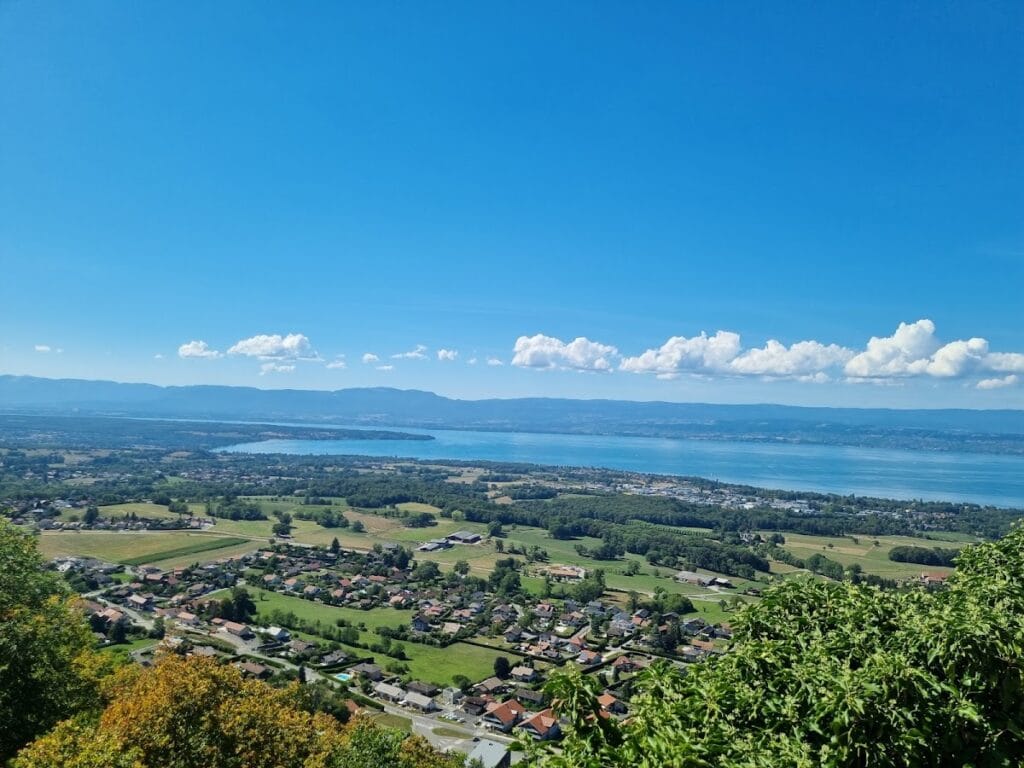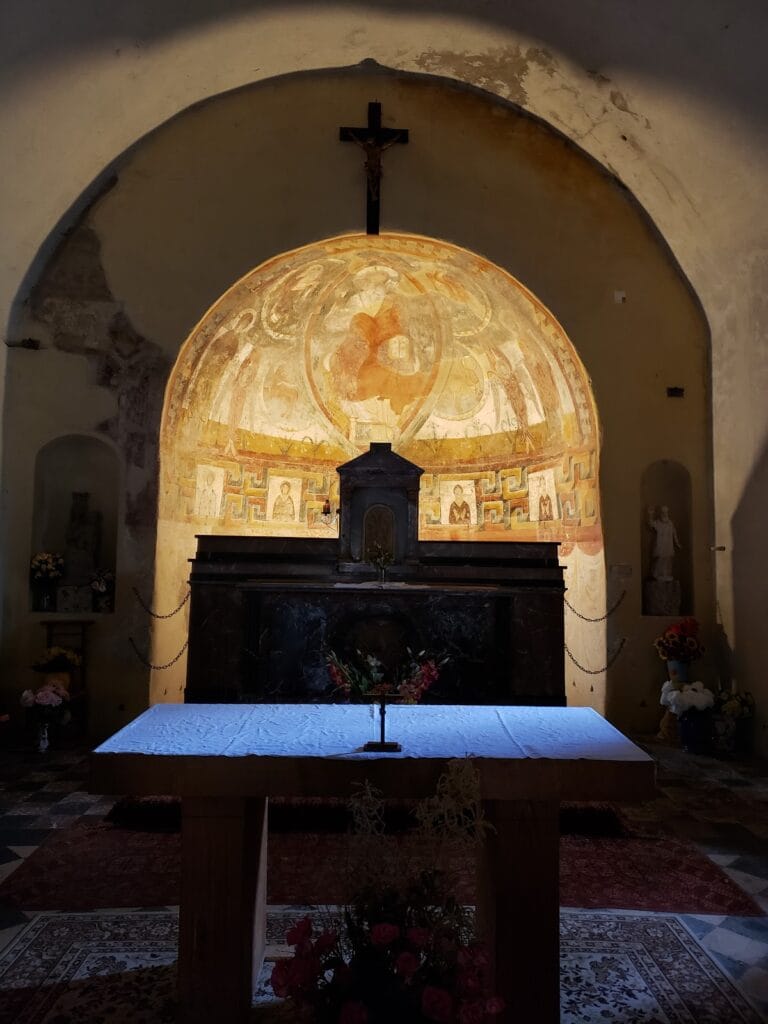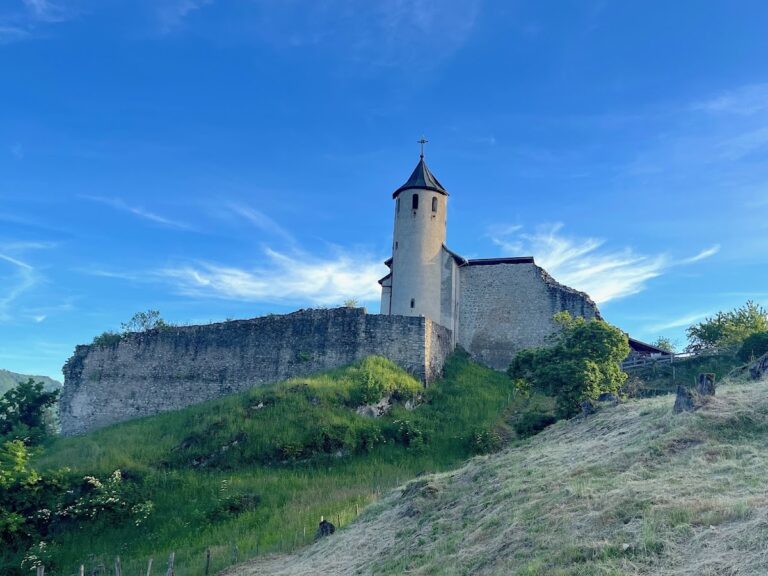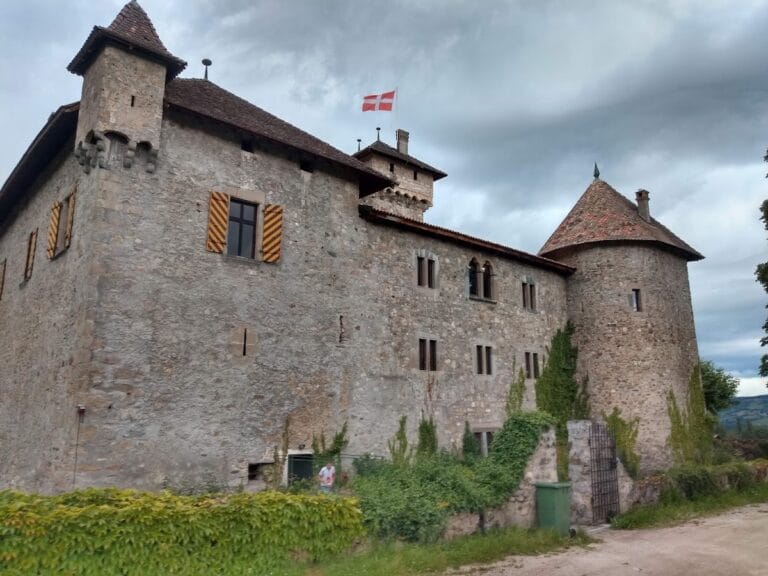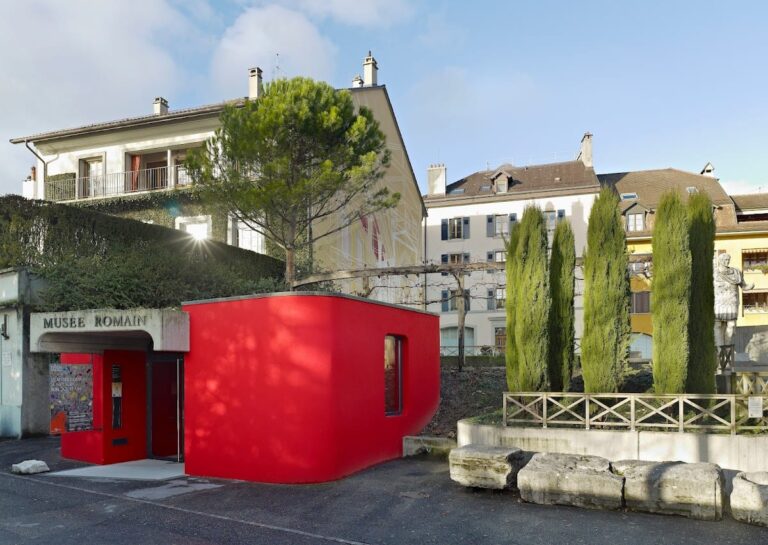Château d’Allinges-Vieux: A Medieval Fortress in Allinges, France
Visitor Information
Google Rating: 4.6
Popularity: Low
Google Maps: View on Google Maps
Country: France
Civilization: Medieval European
Remains: Military
History
The Château d’Allinges-Vieux stands on a hill in the commune of Allinges, France, and was originally built by medieval builders during the 10th century. Its strategic position in the Chablais region reflects a long history of fortifications at the site, which may have first been used for defense as early as the 6th century by the Burgondes, a Germanic people who settled in the area.
In the early medieval period, the castle emerged as the center of a seneschalship, an administrative district, governing the Faucigny region. It was closely linked to the local noble family of Allinges, who maintained control separate from the nearby Château d’Allinges-Neuf, located just 150 meters away. By the late 12th century, control of the castle shifted to the lords of Faucigny, who reinforced its military role by stationing a garrison led by a seneschal, an official in charge of administration and justice.
The 13th century brought significant political changes when Pierre II of Savoy married into the line controlling the castles, effectively uniting the two strongholds. However, this union did not eliminate conflict. Rivalries between the House of Savoy and the Dauphins of Viennois resulted in a series of sieges between the late 13th and mid-14th centuries. Around 1269, the Dauphins occupied the castle, and the fortress endured repeated assaults, including damage from siege engines in 1291, 1292, and 1302, as well as intense bombardment in 1305. These military attacks reflect the contested nature of this border region during the Middle Ages.
Following the Treaty of Paris in 1355, the Faucigny territory was formally absorbed into the Savoyard state. This political consolidation ended the ongoing hostilities related to the control of the castle. Despite its former prominence, by the end of the 14th century, the castle was gradually abandoned as residents migrated from the hillside down to the more accessible plains.
The fortress did, however, see renewed military use in later centuries. Between 1536 and 1567, Bernese troops occupied the site, reflecting the turbulent power struggles of the period. It was again used during invasions around 1690. Then, in 1703, Victor-Amédée II, Duke of Savoy, ordered the dismantling of both Château d’Allinges-Vieux and the nearby Château d’Allinges-Neuf, a deliberate act to prevent future military use.
Centuries later, in 1832, the ruins were acquired by Pierre-Joseph Rey, the bishop of Annecy. Recognition of the site’s historical value culminated in 2011 when the entire enclosure, including the keep remains, towers, gates, chapel ruins, and associated castral village, was protected as a historic monument. Throughout its history, the castle also functioned as the administrative heart of a châtellenie, overseeing neighboring parishes under the authority of named seneschals such as Humbert de Lucinge and Nicolas de Fernay between the late 13th and mid-14th centuries.
Remains
The Château d’Allinges-Vieux occupies a commanding position defined by its layered construction and evolving fortifications. Its layout is centered around a large quadrangular keep dating from the 11th or 12th century, which dominates the hilltop. This stone tower measures roughly 18 by 20.5 meters at its base and rises to about 25 meters high. The southern facade remains partially intact, featuring its original battlements. The keep’s walls are impressively thick, ranging from three to four meters, built from small ashlar blocks—carefully cut rectangular stones laid in even courses. Buttresses reinforce the corners, and a square staircase turret projects from the eastern angle, providing vertical access.
Surrounding the keep is the upper enclosure, which combines earlier Romanesque architectural elements with additions from the 13th century. Strengthened by two turrets with solid bases, this upper ward offers evidence of both defensive and residential functions. Below, a lower enclosure from the 13th to 14th centuries surrounds the complex, accessible through a postern gate that was rebuilt during the 14th century. This smaller secondary gate allowed discreet movement in and out of the fortress.
Adjacent to the castle lies the castral village, a carefully planned settlement enclosed by protective walls. A single narrow street provided the main access through this area, along which rectangular houses were aligned. Each house occupied a plot about six to ten meters long and four to five meters wide. The long axis of these buildings ran perpendicular to the street, and every home had its own entrance opening directly onto this thoroughfare. These were two-level structures: workshops occupied the ground floors, while the upper floors served as living spaces. Their walls were substantial—between 60 and 90 centimeters thick—and access to the upper stories was provided by wooden staircases. Foundations and some floor surfaces were carved directly into the bedrock of the hillside, demonstrating adaptation to the terrain.
The nearby sandstone quarries supplied the stone needed for the castle’s construction as well as the village buildings and even millstones, indicating a local industry supporting daily life and defense capabilities. Within the upper courtyard of the castle remain traces of the chapel, as well as other buildings that once supported administrative and residential activities.
Overall, the site’s ruins include key defensive features such as gates, towers, and posterns, which together formed a layered protective barrier. These remains provide valuable insight into the living conditions, defensive strategies, and architectural evolution of a medieval fortress and its associated community. The enclosure walls, keep, village structures, and chapel ruins can still be seen today, preserving a tangible link to the region’s medieval past.

